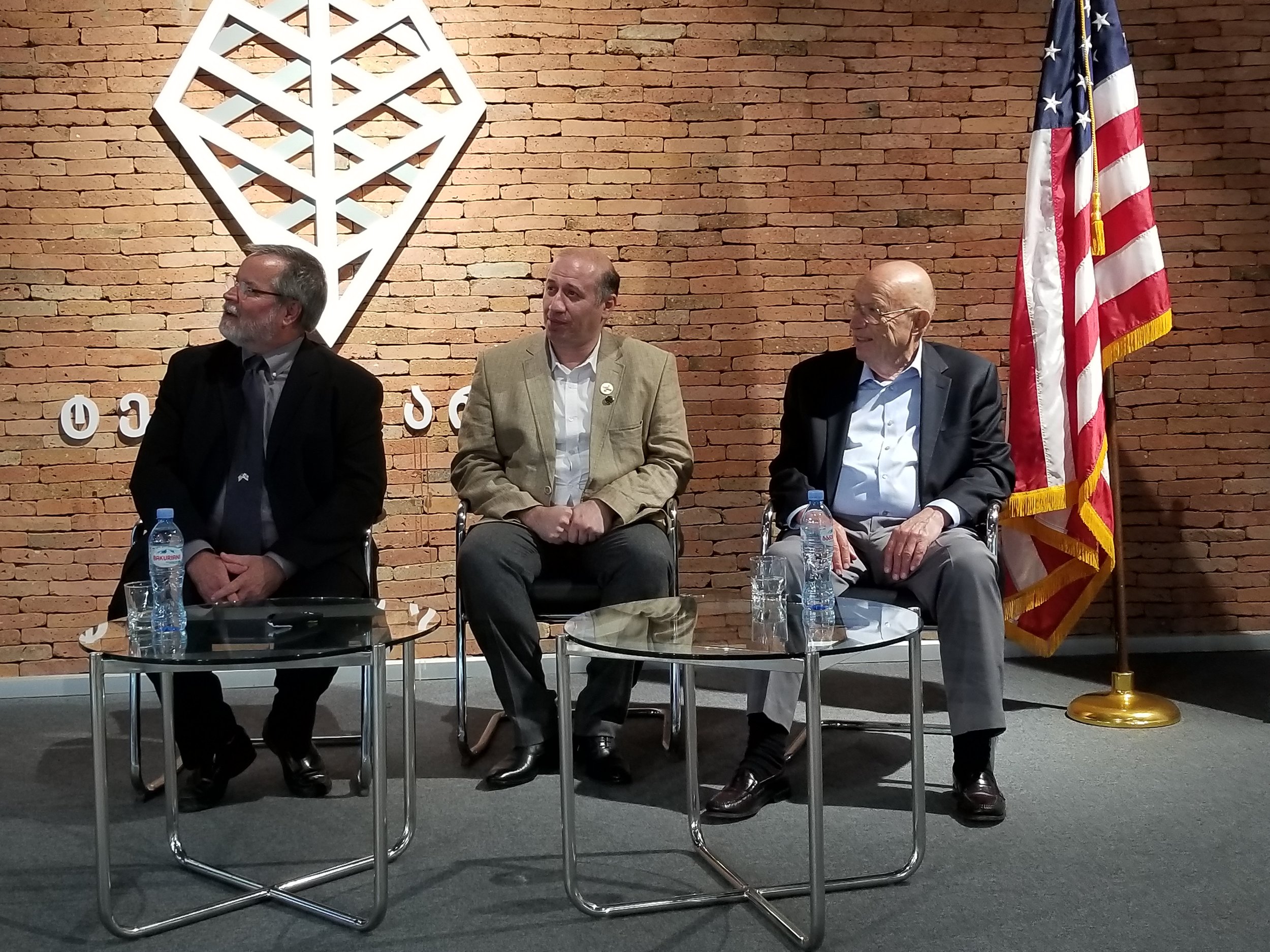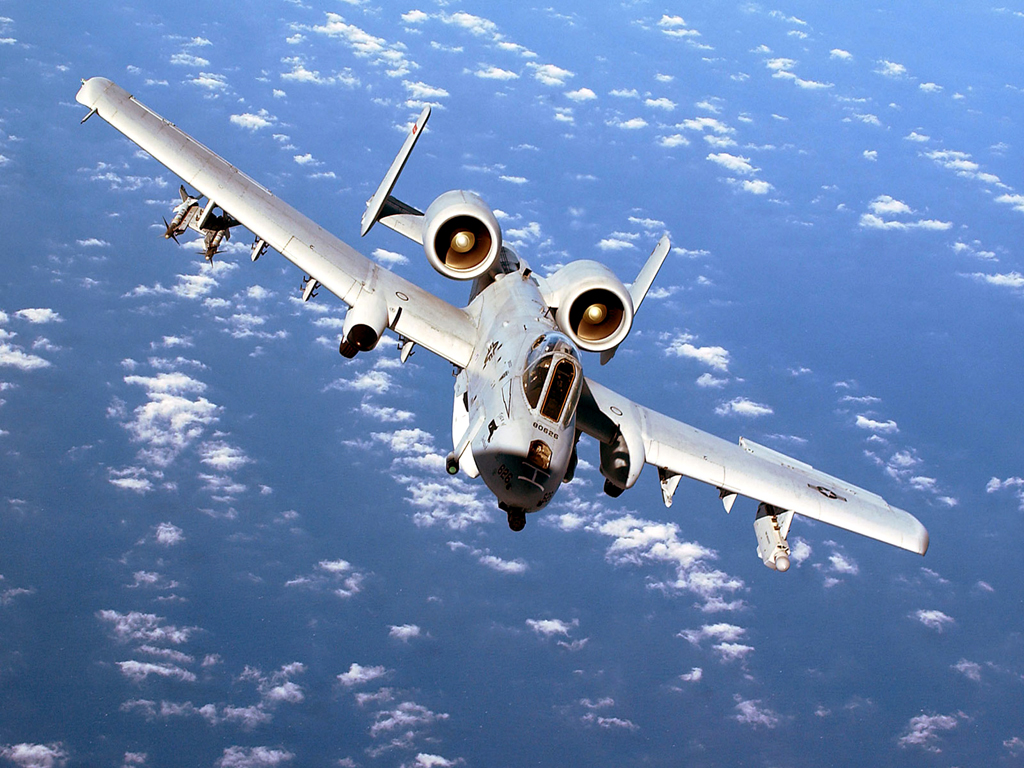Alexander Kartveli Association Sponsors Voyager Mission Anniversary Events in Tbilisi
The Alexander Kartveli Association sponsored a week-long celebration (September 25-28th) of the 40th anniversary of the Voyager missions as part of its mission to supports efforts to expand opportunities for young people in STEM initiatives.
Continuing on their more-than-40-year journey since their 1977 launches, the Voyager missions are much farther away from Earth and the sun than Pluto. In August 2012, Voyager 1 made the historic entry into interstellar space, the region between the stars.
The events took place in Tbilisi, Georgia. Key members of the original mission team attended included Rob Manning, Mars program senior engineer, and John Casani, Head of the Voyager satellite program. The U.S. Ambassador Kelly and Deputy Chief of Mission Elizabeth Rood also partook in these events.
Robert Manning exchanges Golden Record at ceremony as John Casani head of Voyager program looks on. Pictured in the foreground is Mariam Jashi, Chair of the Education, Science and Culture Committee, Georgian Parliament
NASA and the Smithsonian’s National Air and Space Museum celebrated the anniversary of the Voyager 1 & 2 spacecraft with a public event on September 5th.
Voyager 1 carried an iconic Georgian folk song (Charkulo) on the “Golden Record.” The 'Golden Record' contain sounds and images selected to portray the diversity of life and culture on planet Earth. The spirit and effort of that mission are emblematic of Alexander Kartveli’s dedication to innovation, entrepreneurship and learning. For example, it is little known that Kartveli performed important preliminary design work on high orbital aircraft and advised NASA’s predecessor agency – NACA (the National Advisory Committee for Aeronautics (NACA).
Robert Manning reviews photos of the Voyager launch at the Techno Park established by Georgia's Innovation and Technology Agency (GITA)
Here are some events that celebrated the anniversary:
- NASA engineers met with tech-related startups and small businesses at 'Techno Park' of Georgia run by The Georgian Innovation and Technology Agency (GITA);
- Voyager project manager John Casani spoke about the decision to include a Georgian song on the Voyage spacecraft.
- A screening of the new Voyager documentary The Farthest was shown produced by Emer Reynolds;
- Rob Manning described the challenges of landing a rover on Mars;
- The Erisioni ballet performed a final celebration concert at the Georgian Opera House followed by a screening of The Song, a documentary film sponsored by the Alexander Kartveli Association and produced by the NOVA Foundation.
The Voyagers’ original mission was to explore Jupiter and Saturn. Though the twin spacecraft are now far beyond the planets in our solar system, NASA continues to communicate with them daily as they explore the interstellar frontier.
Ramaz Bluashvili interviewing Robert Manning (left) and John Casini (right)
History
From the NASA Kennedy Space Center at Cape Canaveral, Fla., Voyager 2 was launched first, on August 20, 1977; Voyager 1 followed on a faster, shorter trajectory launched on September 5, 1977.
On February 14, 1990, Voyager 1 took the last pictures of the Voyager mission. Beyond the outermost planet in our solar system, at a distance of about 3.7 billion miles (6 billion kilometers), Voyager 1 turned its camera inward to snap a series of final images that became its parting farewell to the string of planets it called home. Mercury was too close to the sun to see, Mars showed only a thin crescent of sunlight, and Pluto was too dim, but Voyager was able to capture cameos of Neptune, Uranus, Saturn, Jupiter, Earth and Venus from its unique vantage point. Earth was quite small and hard to discern. It was this image that inspired Carl Sagan to call our home planet“a pale blue dot.”
After that set of portraits, the cameras on Voyager 1 and 2 were switched off and the software controlling them removed from the spacecraft. There was very little for the cameras to see in the vast, dark emptiness of space. Mission managers needed to conserve antiquated computer memory space (advanced for its time at launch) as well as to conserve power for other instruments that would be critical to measure the boundaries of intersteller space. It would be those measurements that would describe what the far reaches of the solar system were like. This milestone marked the end of the Grand Tour mission and the beginning of Voyager’s Interstellar Mission.





